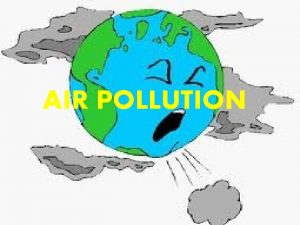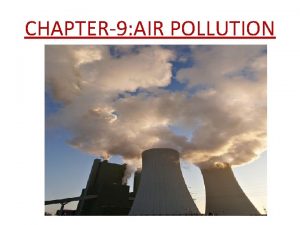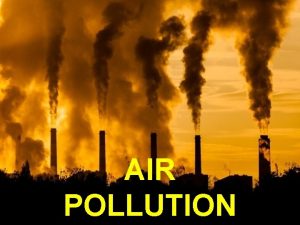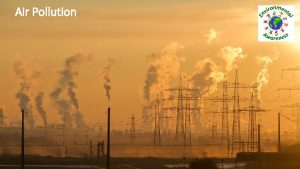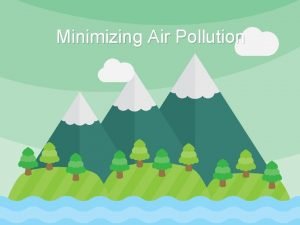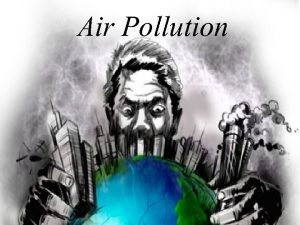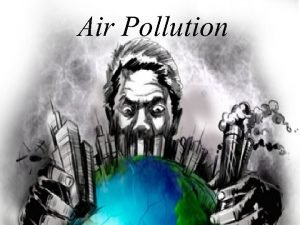Long Range Transport of Air Pollution Air pollution












- Slides: 12

Long Range Transport of Air Pollution • Air pollution can travel hundreds of miles and cause multiple health and environmental problems on regional or national scales • Emissions contributing to PM 2. 5 and ozone nonattainment often travel across state lines, especially in the eastern U. S. • • • SO 2 and NOx and transformation products contribute to PM 2. 5 transport NOx and transformation products contribute to ozone transport Attaining national ambient air quality standards will require some combination of emissions reductions from: • • sources located in or near nonattainment areas (such as mobile sources) and sources, such as power plants, located further from the nonattainment area • Clean Air Act contains provisions for States and EPA to address interstate pollution transport. • EPA is also addressing ozone and particle pollution from mobile sources by implementing national fuel and engine standards.

Regional Emissions Contribute Significantly to Local Nonattainment Problems Urban v. Regional Contribution to PM Concentrations (Annual Average, ug/m 3) • Because emissions are often transported across state boundaries, both regional and local action is needed to address air quality issues. • Federal action would significantly reduce the burden on state and local governments by addressing transport. 2

Counties With Monitors Exceeding the Ozone and PM 2. 5 NAAQS in 2002 Ozone Nonattainment (226 Counties) PM 2. 5 Nonattainment (49 Counties) Both Nonattainment (71 Counties) 3

Proposed IAQR: Key Elements • Sets the geographic scope based on air quality impact of emissions (SO 2 and NOx) from individual states on 8 -hour ozone and PM 2. 5 nonattainment • Sets an emission reduction requirement for each State, based on capping EGU emissions at levels that EPA believes are highly cost effective to achieve. • Provides an (optional) cap and trade program based on successful Acid Rain trading program • Allows states flexibility on how to achieve the reductions, including which sources to control and whether to join the trading program • Proposes a two-phase program with declining caps (budgets) – SO 2: 3. 9 million tons in 2010 and 2. 7 million in 2015 – NOx: 1. 6 million tons in 2010 and 1. 3 million in 2015 4

Significant Contribution - Overview • Two-step approach for interpreting section 110(a)(2)(D). Patterned after successful 1998 NOx SIP Call. – Step 1 – Air quality assessment to identify upwind States that contribute significantly (before considering cost) to downwind nonattainment. – Step 2 – Control cost assessment to determine the amount of emissions in each upwind State that should be reduced to eliminate each upwind State’s significant contribution to downwind nonattainment. EPA has proposed that highly cost-effective reductions for EGUs should be achieved. • Factors considered: – Degree and geographic extent of current and expected future nonattainment; – Potential impact of local controls on future nonattainment; – Potential for individual pollutants to be transported between States; – Extent to which pollution transport across State boundaries will contribute to future nonattainment; and – Availability and timing of controls to achieve highly cost-effective reductions. 5

IAQR: Affected Region and Emission Caps Emissions Caps* (million tons) 2010 States controlled for both SO 2 and NOx SO 2 3. 9 2. 7 NOx 1. 6 1. 3 States controlled for ozone season NOx only States not covered under the IAQR rule 2015 *For the affected region.

Projected Annual SO 2 Emissions for EGUs Under IAQR 7

Projected Annual NOx Emissions for EGUs Under IAQR 8

Other Projected Impacts Regional Retail Electricity Prices Natural Gas & Coal Prices Gas Coal Note: Minemouth and Henry Hub prices Coal Production for Electricity Generation Mix (million tons) Other 2010 2015 2020 Renewables Hydro Nuclear Gas/Oil Coal 9 Note: Retail prices from 2000 are from AEO 2003. All other data is from EPA’s Integrated Planning Model.

Projected National Electricity Prices Retail electricity prices are expected to gradually decline from today’s levels but then rise over time, both with and without the Interstate Air Quality Rule • The Interstate Air Quality Rule has a small impact on national electricity prices 10 Note: Retail prices from 2000 are from AEO 2003 and represent national prices. Prices for the period 2005 and after were calculated using the Retail Electricity Price Model.

Next Steps • Supplemental Notice on Mercury Rule Feb 2004 • Hold public hearings Feb 25 -26, 2004 – in Chicago, Philadelphia, and Research Triangle Park, NC • Comment period closes • Supplemental Notice on Interstate Air Quality Rule Apr/May 2004 • Finalize Mercury Rule Dec 2004 • Finalize Interstate Air Quality Rule Mar 30, 2004 Dec 2004 11

To Learn More… • Interstate Air Quality Rule – Website: epa. gov/interstateairquality – Docket no. 2003 -0053 (Electronic docket: epa. gov/edocket) • Utility Mercury Reductions Rule – Website: epa. gov/mercury – Docket no. 2003 -0056 (Electronic docket: epa. gov/edocket) 12
 As compared to long-range forecasts, short-range forecasts
As compared to long-range forecasts, short-range forecasts Long and short
Long and short In the old days there lived
In the old days there lived Chapter 12 section 3 acid precipitation
Chapter 12 section 3 acid precipitation Chapter 12 air section 1 what causes air pollution
Chapter 12 air section 1 what causes air pollution Antiporters
Antiporters Primary active transport and secondary active transport
Primary active transport and secondary active transport Now answer the questions
Now answer the questions Passive transport vs active transport venn diagram
Passive transport vs active transport venn diagram Unlike passive transport, active transport requires
Unlike passive transport, active transport requires Primary active transport vs secondary active transport
Primary active transport vs secondary active transport Bioflix activity membrane transport active transport
Bioflix activity membrane transport active transport Passive trnasport
Passive trnasport














